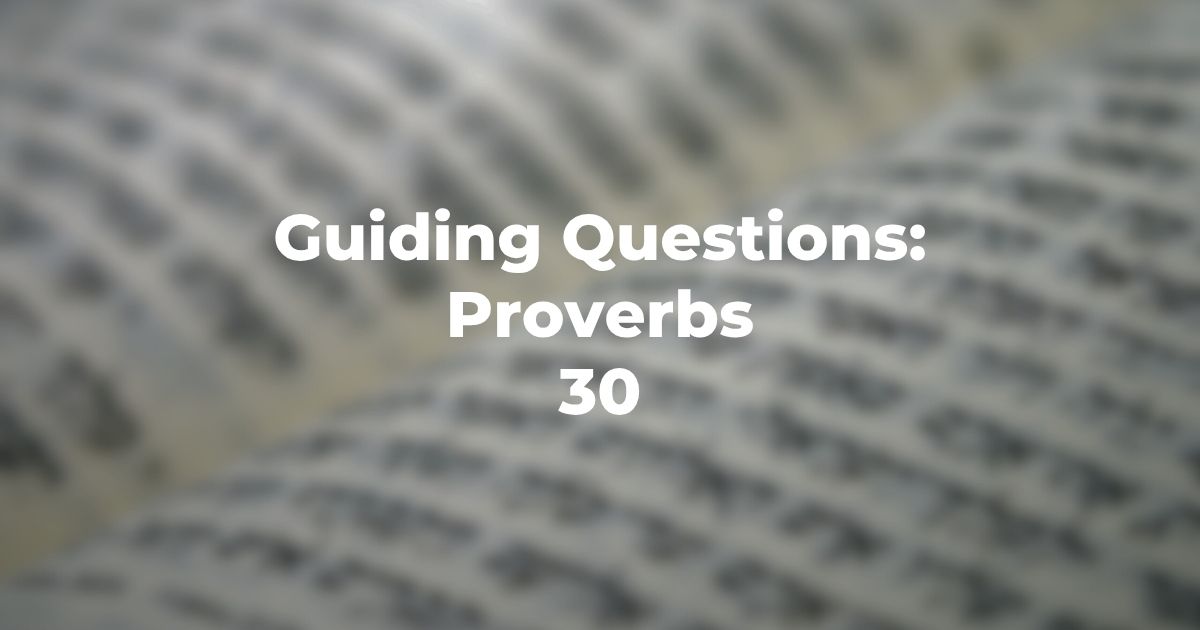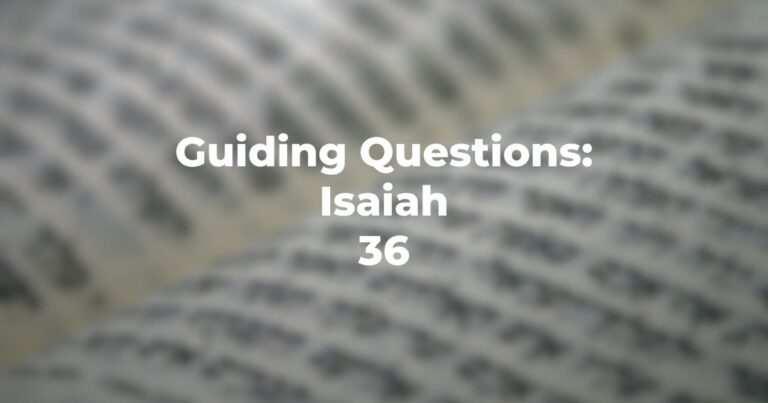- Proverbs 30 begins a new division of the book. What are its basic distinguishing literary features?
- The identity of Agur (Proverbs 30:1) is unknown. Why does the MidrashThis word is used in two ways, as both a concept and a literature. As a concept, midrash is the expansive interpretation of biblical texts. The term is used to describe the practice of rabbinic interpretation. As a text, it refers to specific collections of interpretations, particularly from the third to ninth centuries in the Land of Israel and Babylonia. Plural: Midrashim
Read more find it necessary to identify him with King Solomon? - Why was this chapter included in the Book of Proverbs?
- Does Proverbs 30:6 rule out commentary? Cf. Deuteronomy 4:2.
- Of whom is Agur making a request in Proverbs 30:7-9, and what does he request?
- Proverbs 30:10 is reminiscent of what precept in the TorahRefers to the first five books of the Hebrew Bible, the Tanakh, also called the Five Books of Moses, Pentateuch or the Hebrew equivalent, Humash. This is also called the Written Torah. The term may also refer to teachings that expound on Jewish tradition. Read more? See Deuteronomy 23:16-17.
- JPS translates dor in Proverbs 30:11-17 as “breed.” The usual (and older) translation is “generation.” What does the latter rendering imply?
- What does “leech” connote in Proverbs 30:15? Does it have a similar connotation in modern usage?
- In Proverbs 30:16, does “barren womb” belong in the same category with the other conditions? Why is Sheol called a barren womb?
- In Proverbs 30:19, why does the last mystery fit in with the others?
- Why doesn’t Agur express similar disdain for a male adulterer (Proverbs 30:20)? The last clause in Proverbs 30:19 describes sexual behavior which may differ from adultery. Is a double standard implied?
- What do Proverbs 30:22-23 tell us about the writer’s attitude towards slavery? Doesn’t it conflict with Proverbs 30:10?
- What do Proverbs 30:24-30 reveal about the writer’s knowledge of nature? Why does he cite it here?
- Proverbs 30:31, as noted, is difficult. Why does the second half appear to be inappropriate?
- Where else in the Bible is the “3/4” formula effectively employed? Cf. Amos 1-2.
- A comment: In Proverbs 30:33 a play on words in Hebrew is lost in translation. There is a connection between mitz af and mitz apayim. The first literally means “squeezing the nose”; the second, “squeezing the nostrils” and figuratively, “pressuring anger.” What is the general sense of this verse?
Author
-

Exploring Judaism is the digital home for Conservative/Masorti Judaism, embracing the beauty and complexity of Judaism, and our personal search for meaning, learning, and connecting. Our goal is to create content based on three core framing: Meaning-Making (Why?), Practical Living (How?), and Explainers (What?).
View all posts




